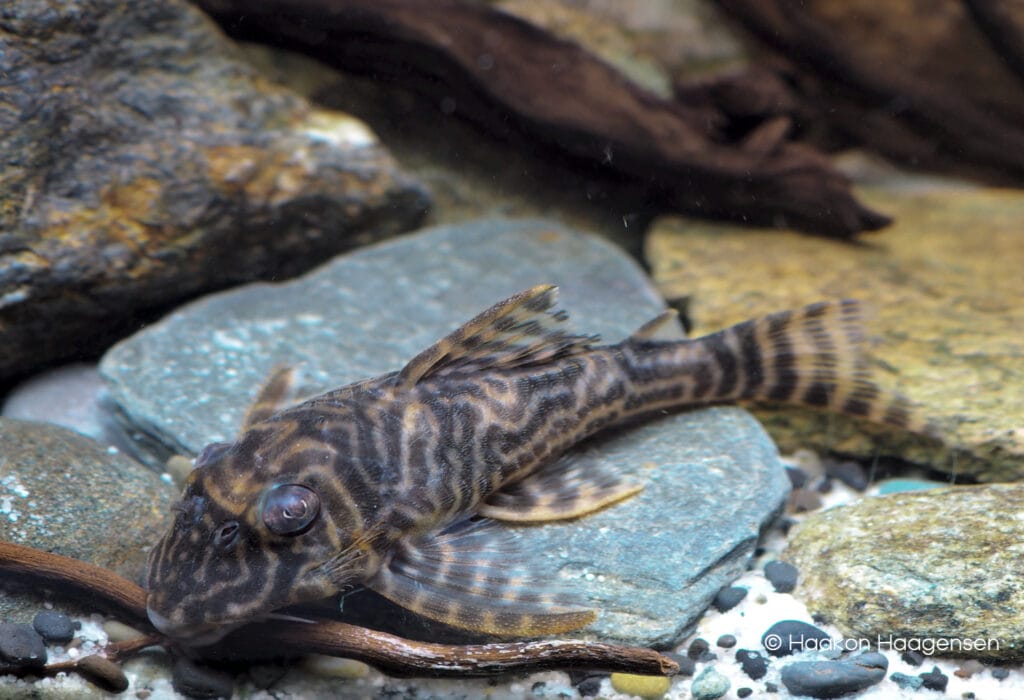
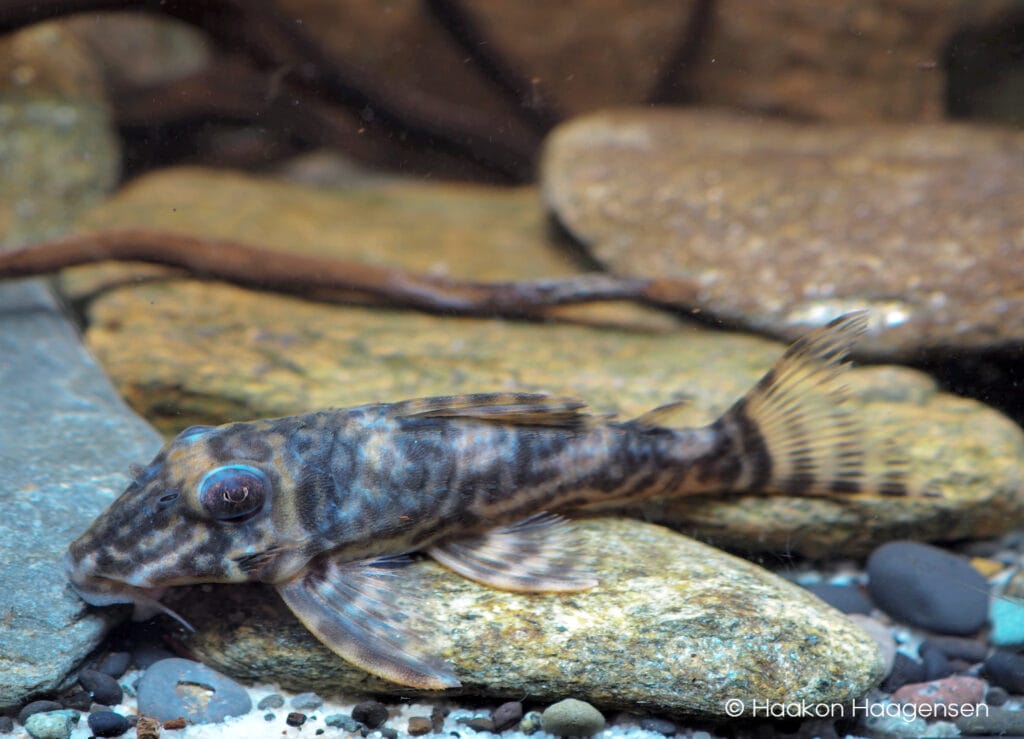
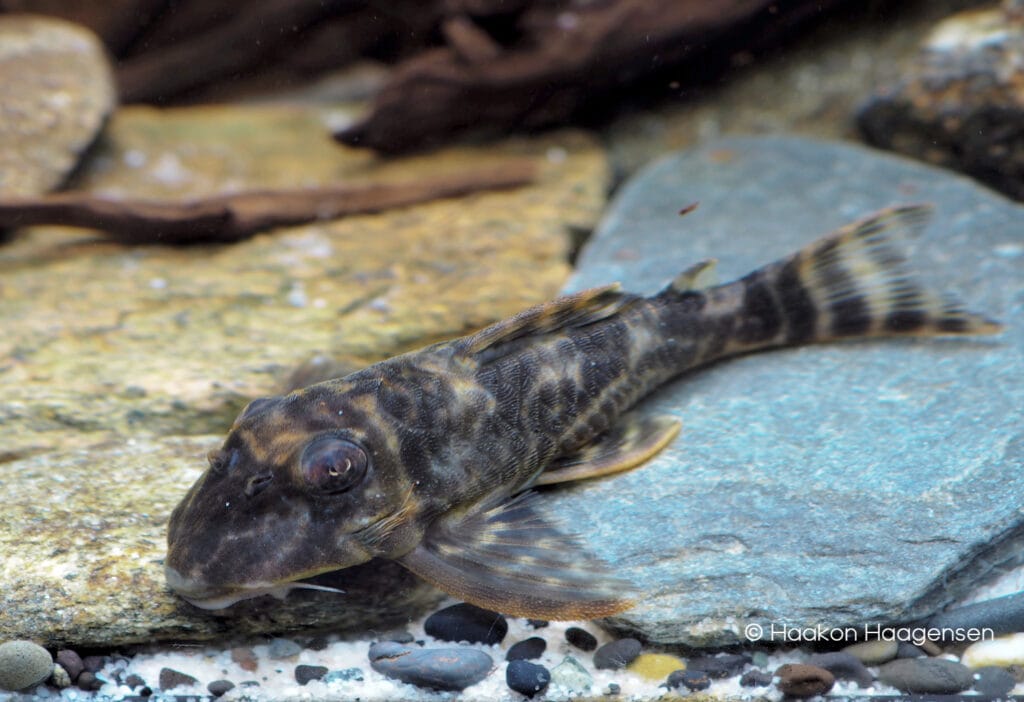

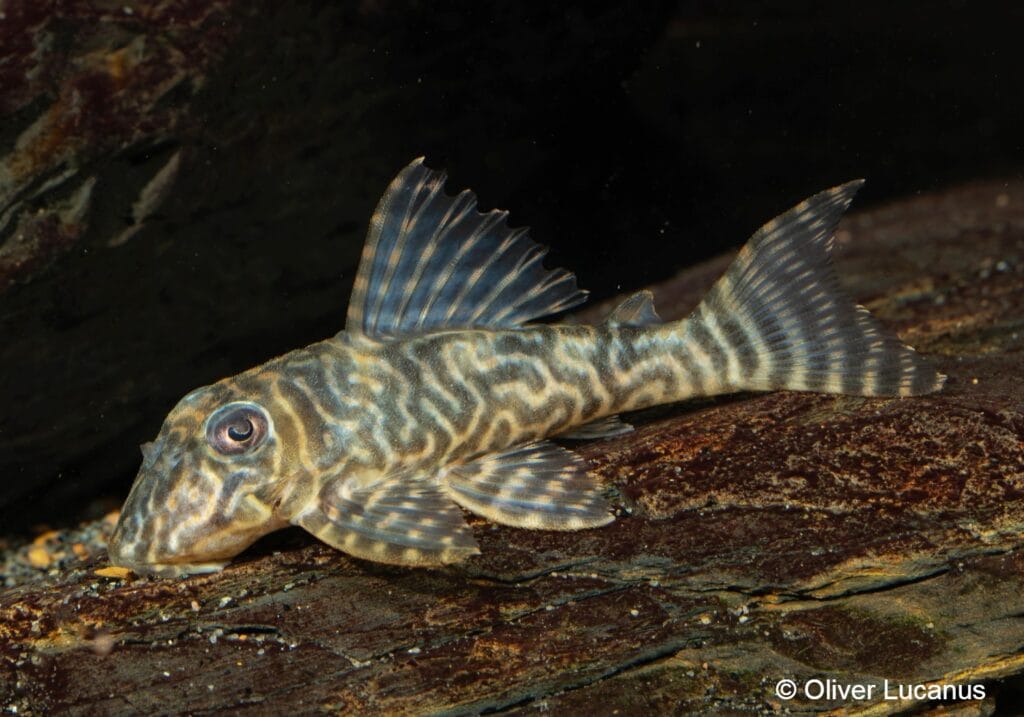
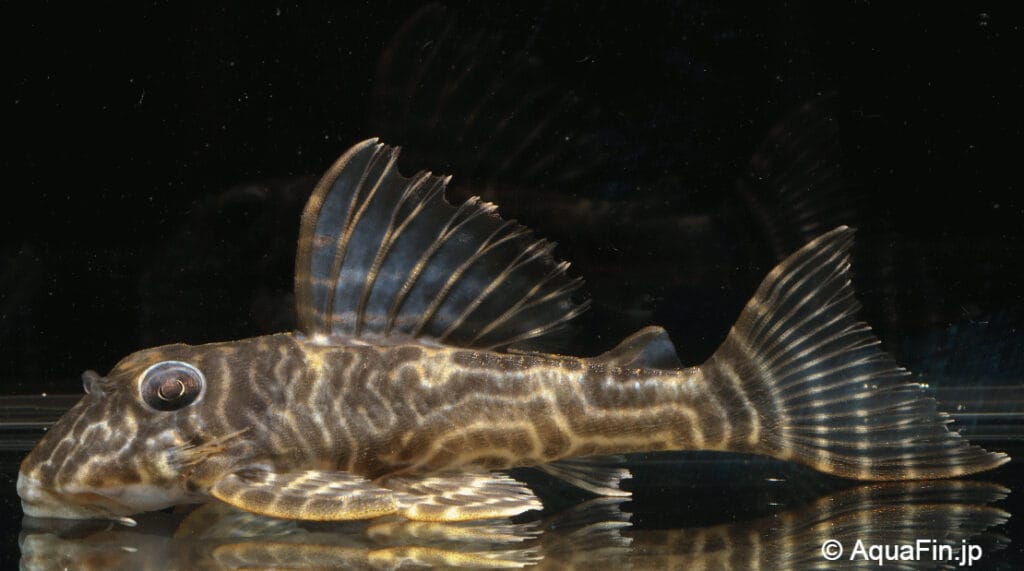
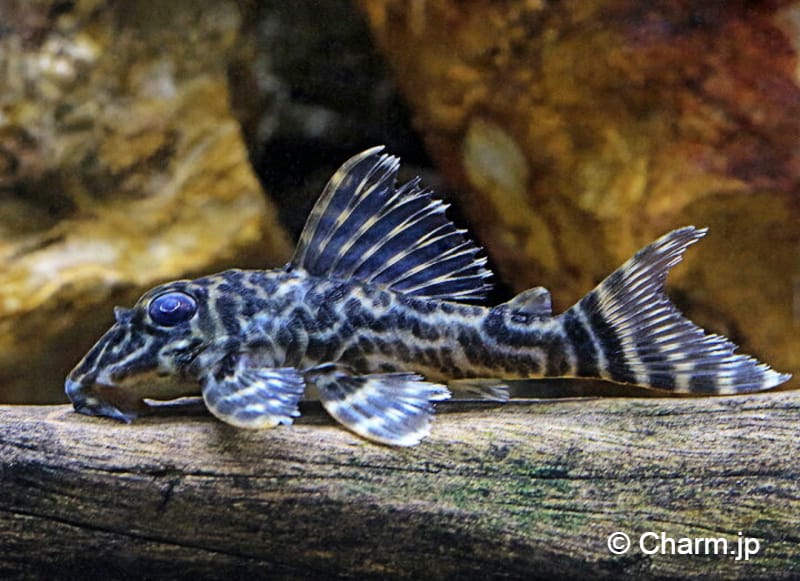
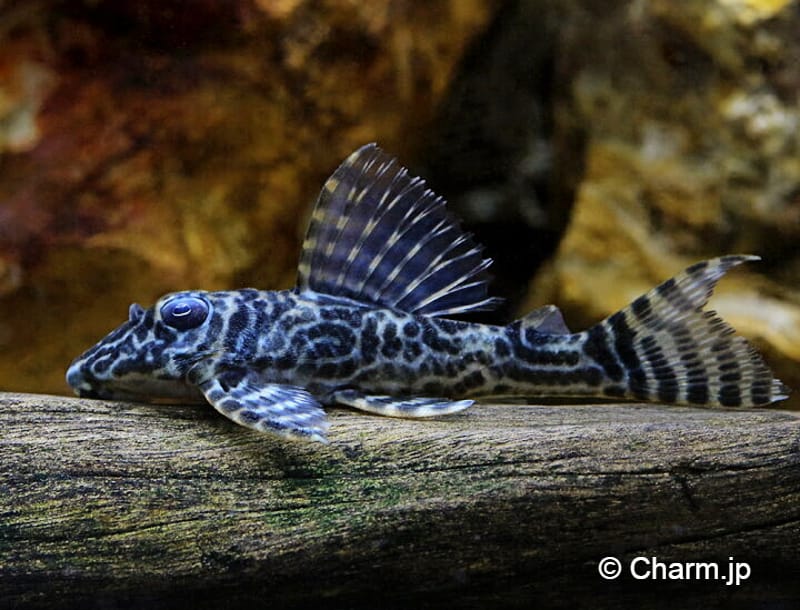
There are still many known types of Hypancistrus awaiting scientific description, and several known types that haven’t been assigned an L-number yet. Some are known only through pictures online, and for a long time Hypancistrus sp. L527 was one of these. Several years ago, I was sent some pictures of a fish that was said to be from Rio Vaupes, which is known as Rio Uaupes on the Brazilian side of the border. It seemed strange that a Hypancistrus mostly resembling a typical Rio Xingu representative of the genus should come from Rio Vaupes. On the other hand, other Hypancistrus species like H.phantasma and H.sp. L501 are already known from this river system. It has now been confirmed by Colombian collectors / exporters Harol Sanchez and Daniel Mejia (the man behind all the new Apistogramma D-numbers) at Necton Tropical Fish that H.sp. L527 is indeed found in Rio Vaupes, where it’s collected among rocks in the rapids near Mitu, close to the Brazilian border. The water is slightly tinted with a pH of 5,5 and a temperature of 28 C. Other suckermouth catfishes found in this habitat are “Hemiancistrus” sp. L476, Hypancistrus sp. L501 and, somewhat surprisingly, Hypancistrus vandragti (L280).
Facts:
Name: Hypancistrus sp.
Trade names: Hypancistrus sp. “Vaupes”, L527
Origin: Mitu, Rio Vaupes, Colombia
Maximum size: 10 cm / 4”
It has been exported in small numbers seasonally since 2019 to Below Water in Canada. In January 2024, a small group was imported by Zierfisch Zentrum in Vienna, Austria, and shipped to me. The species is typically for the genus variable in its markings, but mostly show a network of dark wavy lines against a light brown base colour. Some specimens have more contrasting markings than others. One could be tempted to say that H.sp. L527 is the missing link between H seideli and H.debilittera, at least based on superficial appearance, but it’s most likely another representative of the H.debilittera complex known from several locations in the Orinoco system. So far it seems like H.sp. L527 reaches a maximum size of around 10 cm. The first registered breeding in Bergen, Norway was registered in early August 2025 by Ove Larsen.
As with all Hypancistrus, this species needs an aquarium set up consisting of lots of hiding places in the form of rocks, wood and of course specially made caves that suit their measurements. In these the males will eventually guard their offspring. They prefer water that is fairly warm (27-30 C), soft and slightly acidic. Most of all it should be well oxygenated and clean, so a good filtration system and frequent water changes are essential. It’s a rather small and timid species that should not be exposed to too much competition over food and shelter. Among themselves they are peaceful, although males may quarrel for caves and females can sometimes be badly injured or even killed during the breeding-trapping in the male’s cave.
